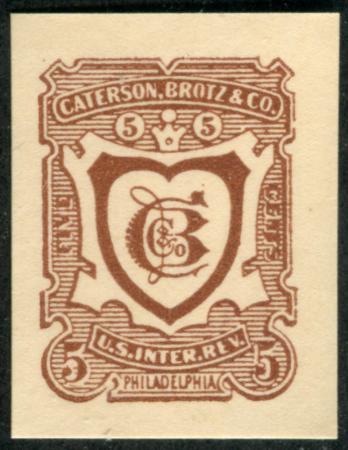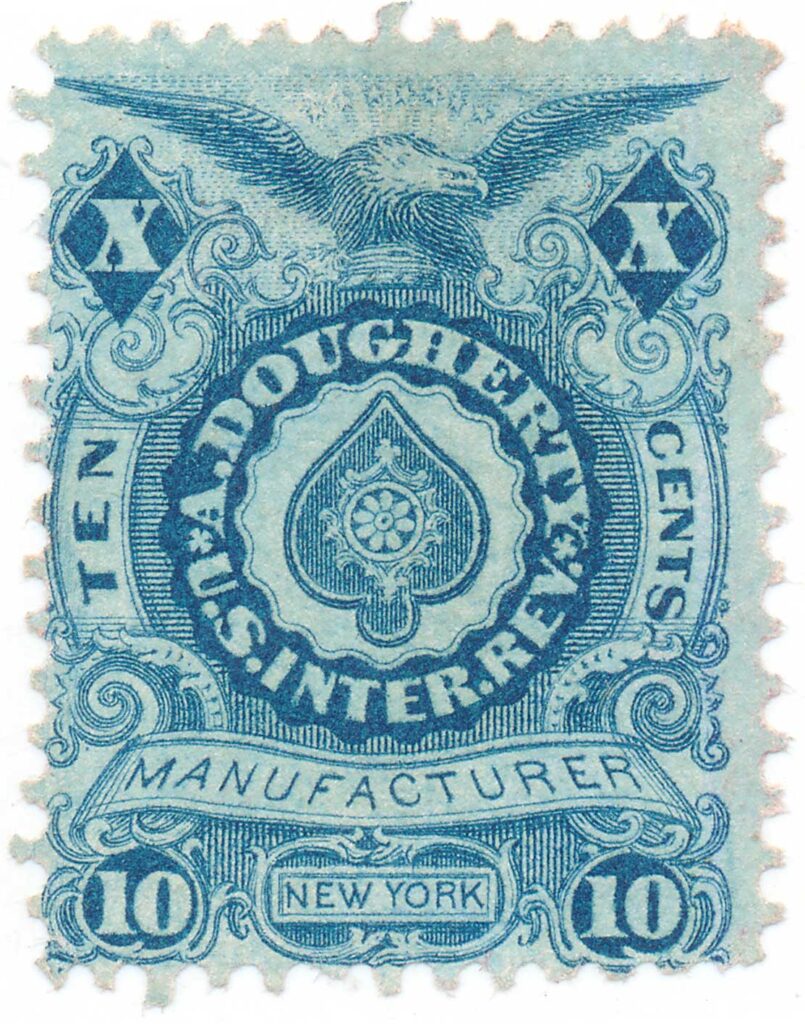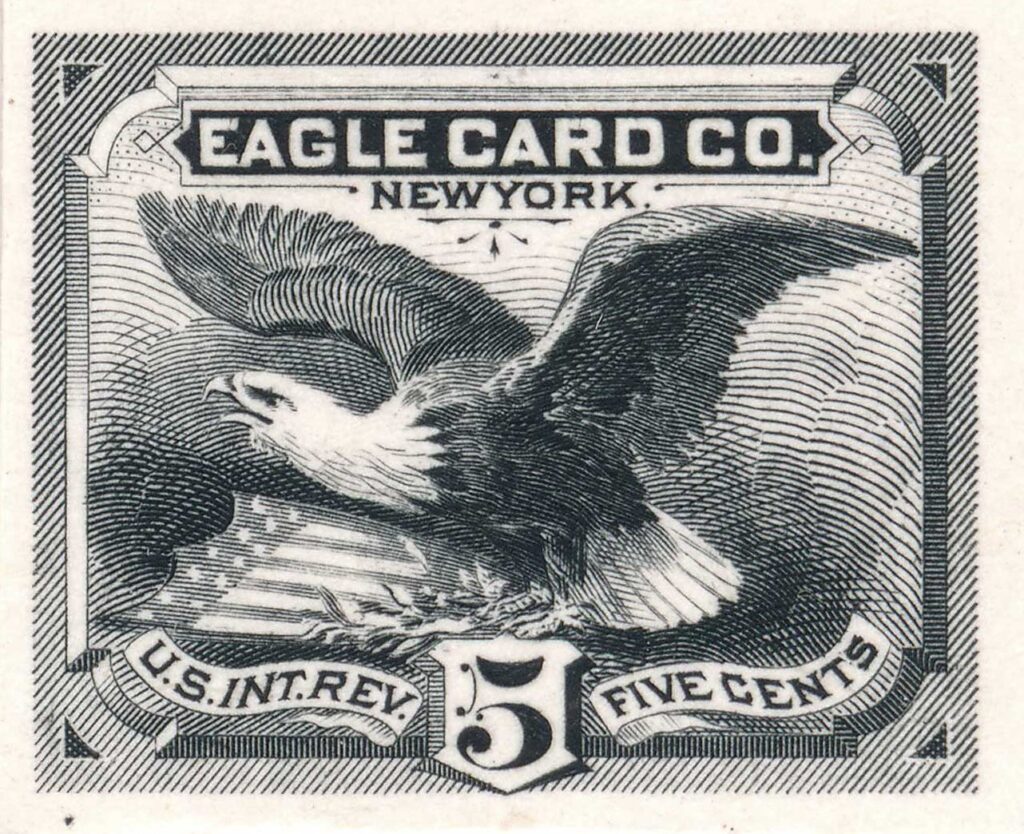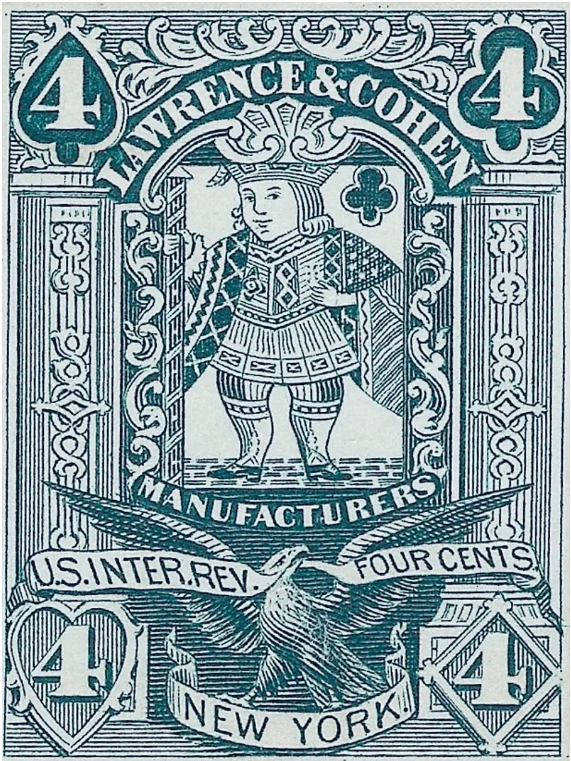Private Die Stamps
The Revenue Act of July 1st, 1862 allowed manufacturers of playing cards to submit their own designs for tax stamps. Once they were approved by the Commissioner of Internal Revenue, they would have a die made and begin producing these stamps. These are the regulations for the creation of Private Die Stamps set by the Commissioner of Internal Revenue:
- Every proprietor can furnish a design for a stamp, which if approved, will be engraved by the gov- ernment engravers, Messrs. Butler and Carpenter, of Philadelphia, at the cost of the proprietor.
- If the designs do not exceed in superficial area 13/16 of an inch for the denomination of one and two cent stamps, or 63/64 of an inch for the denomination of three and four cent stamps… there will be no additional charge to the purchasers.
- Every stamp must be rectangular in form.
- All dies and plates will be retained by, and remain under the exclusive control of, the government.
- The private stamp must be so affixed on the package that, in opening the same, the stamp shall be effectually destroyed.
- When printing in more than one color is desired, the additional expense must be borne by the proprietor.
- Each stamp must bear the words, or a proper abbreviation of them, “United States Internal Revenue.”
- Each stamp must bear in words and figures, the denomination of stamp.
- Proprietors shall be allowed the following discount, namely: on amounts purchased at one time of not less than fifty nor more than five hundred dollars, five percent; on amounts over five hundred dollars, ten percent.
The type of paper used to print Private Die Stamps changed over the years due to change in manufacturers. Here is a chart that shows the different types of paper, the companies that used them, and the time period that they were used in:
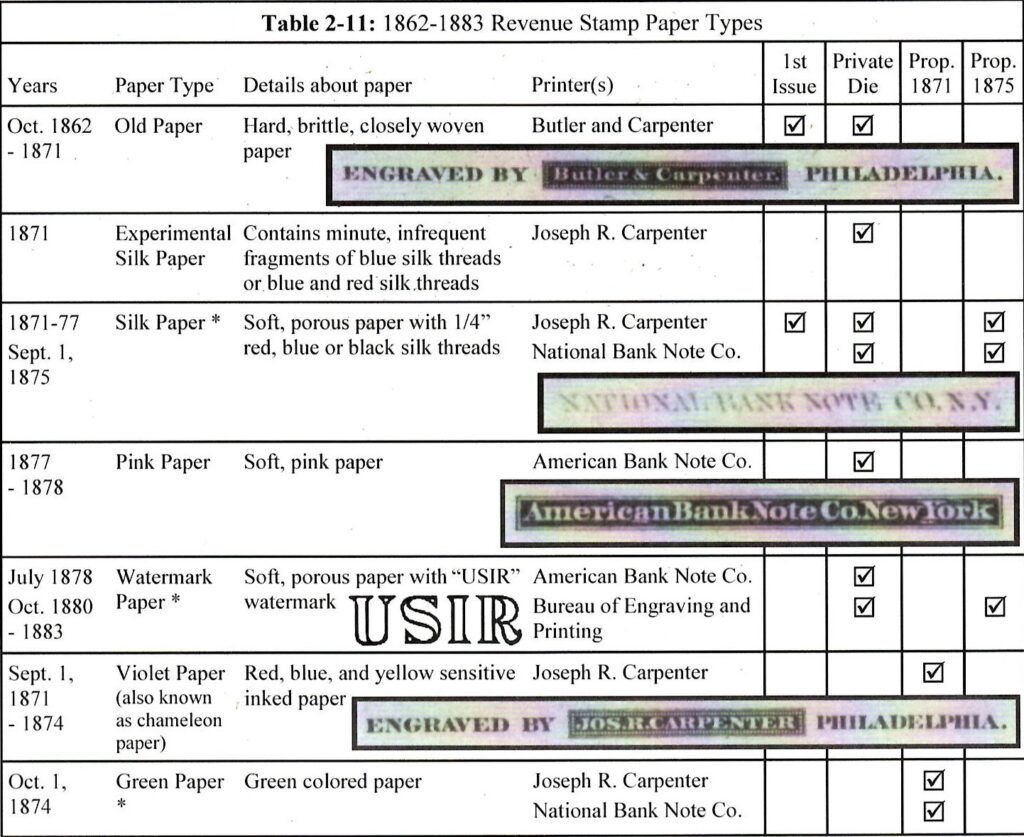
On June 15th, 1880, the US Government passed an act that stated that all the engraving and printing be done by the Bureau of Engraving and Printing. On October 17th, 1880, the Bureau of Engraving and Printing took over printing all of the Private Die Revenue Stamps.
Determining the type of paper used to print your Private Die Stamp can help narrow down the year that it was printed. This site describes in detail the different types of paper used to print stamps to help you identify them.
Stamp Smarter: Papers Used for United States Stamps
Here is a chart that shows the major Playing Card Manufacturers during the 1800s, their addresses, the timeframe their Private Die Stamp was in use, and the timeframe that the US Revenue Act was in place.
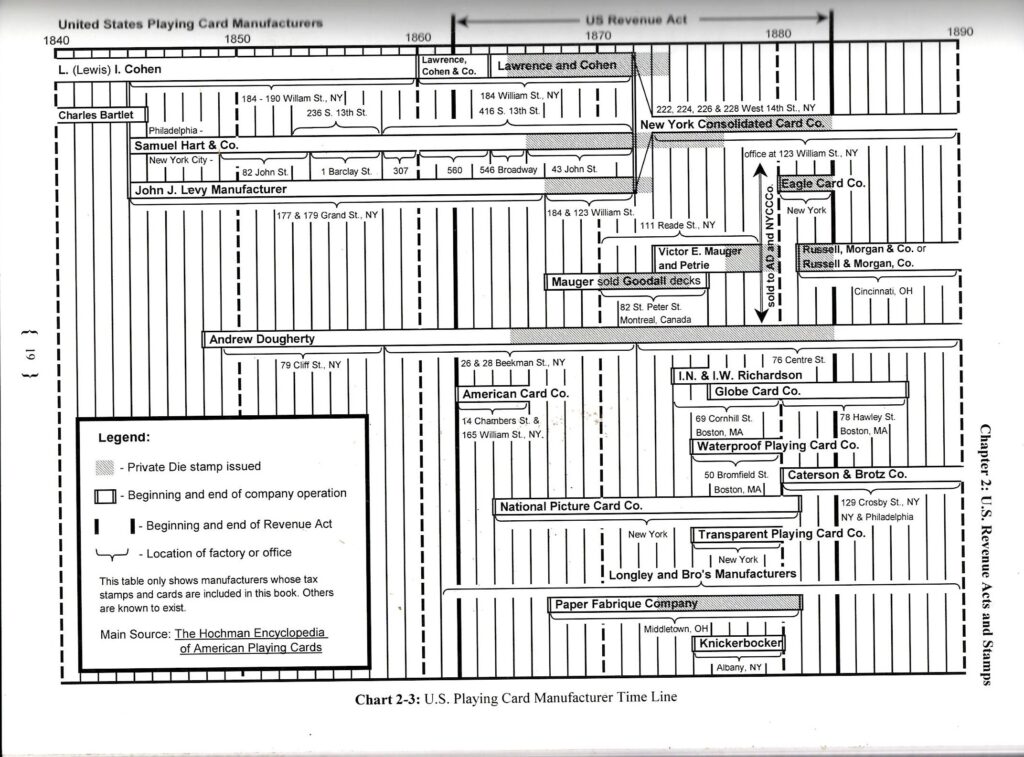
The US Revenue Act was rescinded on March 3rd, 1883. After that date, all production of Private Die Stamps was halted because they were no longer required by the US Government.
